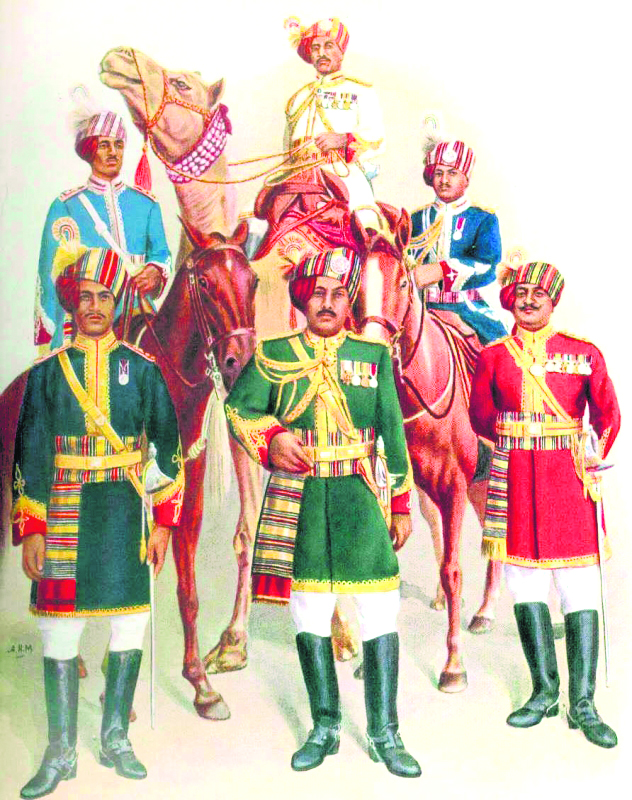Amongst the famous network of trade routes of the world, the Silk Road connecting China, Central Asia and India is undoubtedly the most popular. However, other significant trade routes of ancient stature are lesser-known, and their impact on present-day culture and commerce remains obscure. One such trade route, more informally known as the Wool Road connected the plains of Punjab to Tibet, Central Asia and China. On its long route from Punjab to Tibet, the Wool Road traversed through Himachal’s Kullu and Kinnaur regions. Initially a mere donkey trail, a boost in trade contributed to the route’s widening for motor-able transport known as the Hindustan Tibet road.
 Kinnaur shawl being woven.
Kinnaur shawl being woven. Close-up of Himachali shawls.
Close-up of Himachali shawls.
 The weaver arranging the wool in the loom.
The weaver arranging the wool in the loom.
The strategic location of the Kullu & Kinnaur regions on this important trade route offered an unmatched advantage to the weaving communities settled herein. Over centuries, their weaving traditions both inspired, and in turn were inspired by the trade influx they received. Their exalted reputation for simple and elegant designs, fine fabric and premium manufacturing quality endures. However, it is surprising to note that these distinct and skilful weaving styles remain relatively unknown to the outside world.
This five thousand-old tradition of weaving came to being in Kinnaur via possible Uzbek, Chinese and Tibetan influences via the Wool Road. In the Kinnauri village of Shubnam, a master weaver named Dhuni Chand is hailed for being the first artisan to weave decorative motifs on wool garments. What followed was nothing short of an iconic legacy that would forever change the landscape of Indian textile, and the destiny of Himachali trade. Today, Himachali handloom stands amongst the foremost contributors of state wealth in tandem with tourism and agriculture.
The significant influx of the Kinnauri weaving tradition into the Kullu valley was coincidental at first, but its gradual infusion makes it seem almost obvious in present times. This story dates back to the 1830’s, when weavers of Kinnaur’s Rupa village fled to the Kullu valley in order to escape persecution from their local king. The newly migrated community of Kinnauri weavers soon began to teach their pattern craft to the Kullvi people, and were duly incentivised.
Prior to the arrival of these Kinnauri weavers, Kullvi weaving was restricted to variations of twill weave, checks and plaids. The shawls and pattus of Kullu were devoid of any kind of motifs. In fact, border patterning, as well as the red selvedge border known as the khanni or khushti first appeared on pattus in the 1920s, which is almost 93 years after the Kinnauris first migrated to Kullu. Even contemporary bright and bold patterns used in Kullvi shawls originate from Kinnauri motifs that were enlarged and simplified over time. Yet, what distinguishes the Kinnauri weave from the Kullvi is the latter’s particular use of bold, graphic style which lack in the more sophisticated weaving heritage of Kinnaur. Moreover, Kullvi weaving techniques use a double thread for patterning, which results in a somewhat coarser design as compared to the Kinnauri ones.
Even the idea of the patterned Kullvi shawl stemmed out of the pattu, which was originally inspired from the Kinnauri chhanlis, lengchas, and dohrus. Kullu’s master weaver, Tenjenram Bhagat is credited for weaving the first Kullu shawl. A Mrs. Bhagwandas is believed to have commissioned Bhagat a Kullvi pattu in 1942 in pashmina yarn with design specifications provided by her. Over time, Bhagat was also known for starting the valley’s first weaver’s cooperative society. Since then, a plethora of weaving cooperatives has followed, amongst which Bhuttico and Bodh remain the most popular.
Wool, sheep fleece, important Australian merino, Pashmina and Angora wool constitute some of the prime weaving fabrics. The most common Kullvi shawls produced for commercial purposes bear a ground woven mill-spun merino that is dyed in chemicals. Thereon, brightly coloured acrylic yarn is used to weave the border motifs. Local pattus and dohrus continue to be woven in sheep fleece and yak fleece.
The popular Himachali wool caps too come in several variants, such as the Rampuri, Kinnauri and Kullvi topis. The Kullvi caps carry several iconic motifs that have come to be associated with the Kullu valley and its weaving tradition. For example, there is the Chiriya motif, which depicts a flock of birds in the form of small crosses in various colours, usually arranged in diagonal patterns. Dabbidar Kiru is another Kullvi motif that represents a spotted snake. Guddi is a stylised doll with raised hands, while Kanghu depicts a comb; Tara, a star. Floral motifs are simply called Phool and the religious Swastik symbol too, dominates several motifs. The list of motifs, patterns and weaving designs carries on, and many housewives too can be seen operating looms as an added source of income in their sunlit balconies and foyers. This heartening display of handloom culture outside of formal cooperatives is a common sight for trekkers, wanderers and even drivers in and around the Kullu Valley.
The recent liberalisation policies, the rising cost of raw material and the competition posed by the loom sector poses the weaving communities of Himachal Pradesh at risk. Hand weavers across India face similar challenges and are struggling to survive. Several weaving communities are migrating to other fields of work to escape poverty and unemployment in their ancestral craft. The concept of ‘jalas’ to record motifs is scarcely used in Kullvi and Kinnauri weaving, which further endangers several motifs. In bringing these dying crafts to a larger, discerning audience is the only way to help create a wider market that appreciates and patronises these artisans’ products.
Urvashi’s Retreat, Manali has recently launched its gift shop that showcases the diverse handicrafts of India’s vivid artisanal communities.













